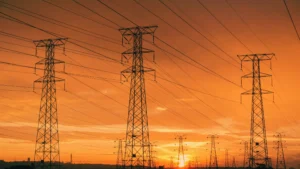U.S. energy infrastructure downgraded to a D+ — But strategic planning can save it
The American Society of Civil Engineers (ASCE) has issued a stark warning about the state of U.S. energy infrastructure, downgrading its 2025 Infrastructure Report Card grade to a D+ from the C- given in 2021. Aging assets, severe weather events, and transmission bottlenecks threaten the grid’s reliability.
What can the energy sector do to correct this downward trend?
The growing strain on an aging gride
The energy sector faces mounting challenges, including but not limited to a shortage of distribution transformers, increasing reliance on data centers and electrified technologies, and ambitious decarbonization goals.
By 2030, ASCE estimates that electric vehicles and data centers will demand about 35 GW of electricity, double the 2022 demand. This means electric utilities must dramatically expand their transmission capacity within five years.
Despite $73 billion investment from the Infrastructure Investment and Jobs Act (IIJA) to modernize energy infrastructure, these efforts are outpaced by the rapid growth in energy demand. ASCE estimates a staggering $578 billion investment gap by 2033, which could rise to $702 billion if current funding levels are not maintained.
Biggest threats to energy infrastructure
Aging Infrastructure: Many transmission and distribution (T&D) assets are well beyond their intended lifespan, leading to increased failure rates and higher maintenance costs.
Severe Weather Events: More frequent hurricanes, wildfires, and extreme temperatures place additional stress on power lines, transformers, and substations.
Supply Chain Shortages: A lack of distribution transformers and critical components slows down grid expansion and upgrades.
Rising Energy Demand: The rapid proliferation of electric vehicles (EVs), data centers, and electrified industrial operations is pushing grid capacity to its limits.
Renewable Integration Challenges: Meeting state and federal clean energy mandates requires significant investment in new transmission infrastructure to connect wind and solar projects to the grid.
Protecting energy infrastructure with Asset Investment Planning
An investment gap of $578 to $702 billion over the next eight years is cause for concern. These figures suggest that risk and demand will likely outpace utilities’ ability to invest in infrastructure, adapting it to current and future needs.
Thankfully, there is Asset Investment Planning.
Asset Investment Planning (AIP) offers a data-driven approach that helps utilities maximize available funds and ensure long-term grid reliability. By strategically allocating resources, utilities can bridge the growing investment gap and enhance energy infrastructure resilience.
Optimizing Investment Prioritization
AIP helps utilities prioritize investments based on asset condition, failure risk, and system impact. By using predictive analytics and asset health data, decision-makers can identify which components require immediate upgrades and which can be deferred, reducing the risk of catastrophic failures while optimizing spending. This targeted approach ensures that limited funds are directed toward the most critical infrastructure needs.
Enhancing Grid Resilience Against Extreme Weather
AIP facilitates targeted investments in grid hardening measures, such as undergrounding power lines in high-risk areas, deploying fire-resistant infrastructure, and reinforcing substations against flooding. By assessing historical outage data and climate risk models, utilities can proactively strengthen vulnerable areas of the grid, reducing costly disruptions and damage repair expenses.
Planning for Future Load Growth and Electrification
AIP enables utilities to forecast long-term energy demand trends and plan infrastructure expansions accordingly. By aligning investment strategies with projected growth in EV adoption, industrial electrification, and AI-driven computing power, utilities can avoid capacity shortfalls and prevent costly emergency expansions. This proactive planning ensures the grid evolves in tandem with increasing energy needs.
Supporting Renewable Energy Integration
AIP plays a critical role in ensuring that new transmission investments align with the increasing share of renewable energy in the grid. By strategically expanding transmission capacity and implementing energy storage solutions, utilities can prevent congestion, improve grid stability, and facilitate the transition to a cleaner energy mix. This approach allows for cost-effective integration of renewable resources while maintaining grid reliability.
Investing in smarter, more resilient energy infrastructure
ASCE’s recommendations for improving the U.S. energy infrastructure include adopting a federal energy policy that addresses emerging technology needs, developing a national transformer inventory, and enforcing stringent safety and reliability standards for grid assets. However, even the most ambitious policy initiatives may fall short of delivering the required grid resilience and performance improvements without a structured, predictive way of planning .
The U.S. energy sector must shift toward smarter, data-driven asset management practices to address growing infrastructure challenges. By leveraging AIP, utilities can make informed investment decisions that balance cost efficiency, reliability, and long-term sustainability. Without a strategic approach, the grid will continue to lag behind demand, leaving consumers and businesses vulnerable to outages and instability.
Asset Investment Planning isn’t just a best practice—it’s an imperative for the future of energy infrastructure.



